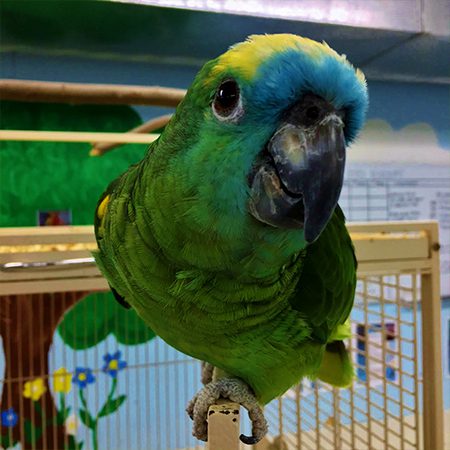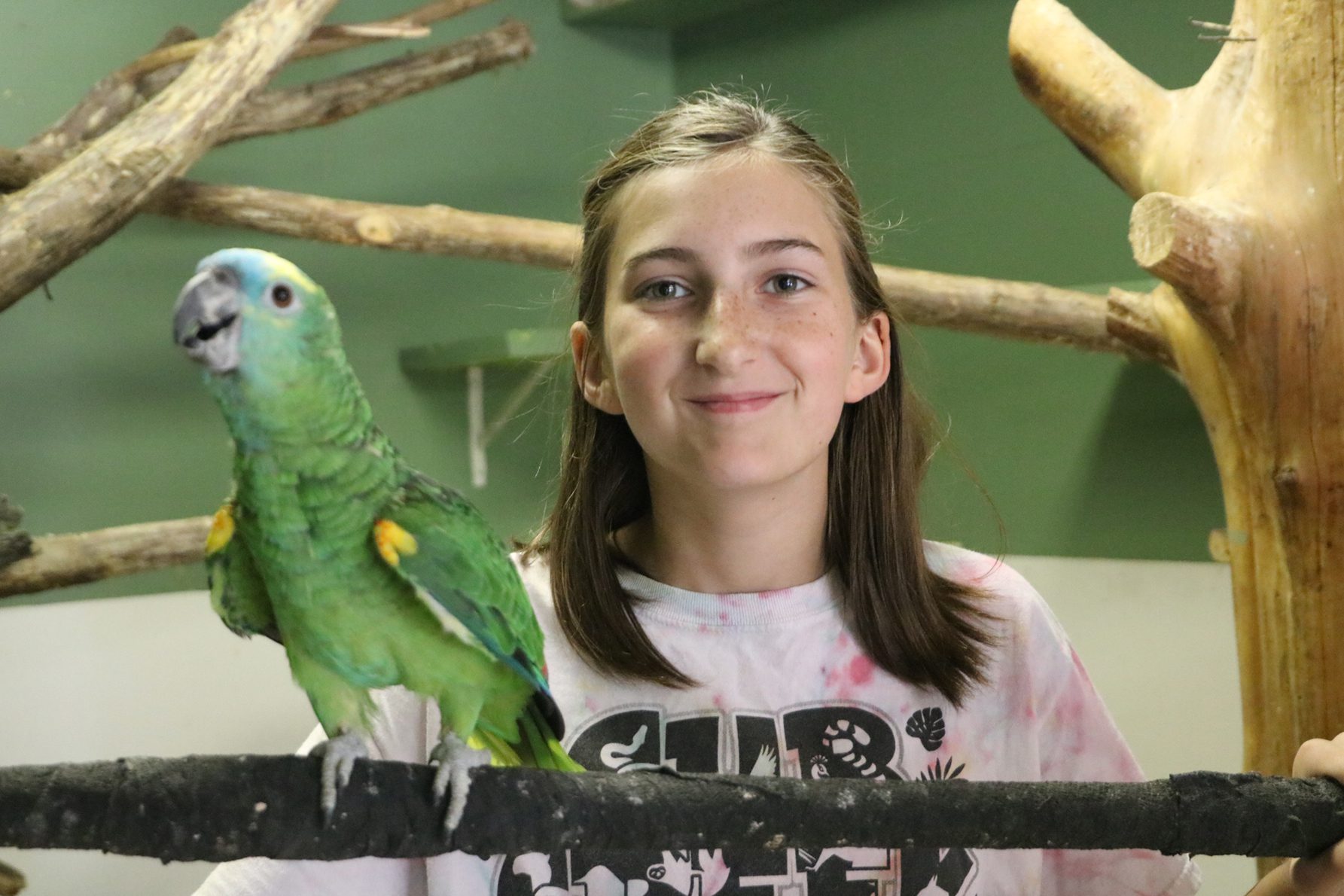Blue Fronted Amazon
Amazona aestiva
The blue-fronted amazon is a South American species of amazon parrot and one of the most common amazon parrots kept in captivity as a pet or companion parrot. Its common name is derived from the distinctive turquoise marking on its head just above its beak. Swedish botanist, Carl Linnaeus, was the first to record the blue-fronted amazon parrot in zoological records in 1758. The species has a very broad range, with wild populations can be found in Bolivia, Brazil, Paraguay, and northern Argentina, extending south to Buenos Aires. At least one feral population is known to be near Stuttgart, Germany. This is likely the result of pet parrots escaping and forming a flock that grew over time.
The blue-fronted amazon typically inhabits woodlands and forests. They live in large flocks and tend to form a strong bond with their mate. Like most parrots, they nest in tree cavities where the female takes care of most of the incubation duties and caring for the young. The blue-fronted amazon is a mainly green parrot about 38 cm (15 in) long. They have blue feathers on the forehead above the beak and yellow on the face and crown.
While generally non-aggressive and good with other birds, some individuals have been known to protect their keepers when they perceive danger. Dive-bombing the aggressor is a common behavior in these times. Additionally, the males may become slightly territorial when breeding or molting. Prolific talkers and singers, they vocalize often and can be very loud when they want to be. While blue-fronted amazons are good talkers, they are even better screamers. You can expect a morning wake up call and one again at sunset.

Blue Fronted Amazons live in the forests of South America, ranging from Bolivia to northern Argentina.
HABITAT -They inhabit woodlands and forests of South America.
DIET -In the wild they forage on fruits and berries, leaf buds, blossoms, seeds, and nuts.
FUN FACT -These birds are very good at mimicking human speech, just say “hello” to Bonita!
SOCIAL BEHAVIOR -They can get along well with other birds and are comforted by human interaction.
ACTIVITY -They are diurnal being most active during the day and resting during the evening.
PREDATORS -Predators include birds of prey such as hawks, falcons, and owls.
SIZE -The blue-fronted amazon is about 15 in long, weighing between 1.1 to 1.3 oz.
RELATIVES -Related species include the White Fronted and Yellow Naped Amazon.
CONSERVATION -Blue Fronted Amazons are categorized as NT (Near Threatened) species by the IUCN.
Cub Creek Animal Care Information
Housing - We house our birds in one of our indoor flight enclosures. Bonita lives in a multi species enclosure with other parrots and cockatoos. Our indoor flight enclosures are large rooms filled with trees! They are the newest renovation to the jungle building! Housing our birds in flight enclosures rather than small cages allows for more socialization and room to let their wings stretch!
Diet - To ensure she gets all the necessary nutrients, she is fed ZuPreem FruitBlend large bird pellets as well as fresh fruits and vegetables such as apples, bananas, shredded sweet potato, and greens. She also loves getting peanuts as a treat! She is given access to fresh water everyday.
Enrichment - Our blue fronted amazon is well accustomed to human interaction, being comfortable perching around humans. Much of this can be attributed to the continual enrichment through training, and social interaction with humans. Our blue fronted amazon is a very vocal singer, we’ve taught them songs like la cucaracha! During the summer, campers will make all kinds of toys for them, made out of cardboard, or pre-made materials.


